Understanding the Downsides of Large-Cap Funds
Are Large-Cap Funds Always the Right Choice? Unpacking the Hidden Drawbacks
Large-cap funds, which invest in companies with market capitalizations typically exceeding $10 billion, are widely favored for their perceived stability, consistent returns, and brand-name recognition. These funds are often the go-to option for conservative investors and retirement portfolios, thanks to their exposure to industry leaders with strong financials. However, popularity doesn’t always equate to suitability. While large-cap funds offer several advantages, it’s equally important to understand their limitations. This article explores the lesser-known disadvantages of large-cap funds—including limited growth potential, valuation risk, overconcentration, and global exposure vulnerabilities—to help investors make more informed, balanced decisions.
Want expert insights from leading investment podcasts? Scroll to the end to the Podcast Transcripts📜
Why Large-Cap Funds May Limit Your Portfolio’s Growth Potential
Large-cap companies typically operate in mature industries with well-established revenue streams and global market penetration. While this stability appeals to risk-averse investors, it also limits the upside potential. In contrast, mid-cap and small-cap companies are often in earlier stages of development, with more room to scale and disrupt markets. Historical data supports this divergence in performance. Over the past two decades, small- and mid-cap indices have consistently outperformed large-cap benchmarks during economic expansions.
For example, the Russell 2000 and S&P MidCap 400 have delivered stronger cumulative returns than the S&P 500 in multiple post-recession recoveries. While large-cap stocks like Johnson & Johnson JNJ and Coca-Cola KO offer resilience, they rarely match the explosive growth potential of smaller, more nimble firms.
The Market Trends Podcast recently explored this theme, noting, "Large-cap stability comes at the cost of innovation velocity." ⏳ At the 21:10 mark, analysts discussed how mid-cap disruptors are outpacing legacy firms in sectors like fintech and clean energy. Meanwhile, the Investor Insights Podcast examined historical growth spreads between market caps. ⏳ At the 23:20 mark, they highlighted how small-cap stocks outperformed large caps by over 30% during the 2009–2013 recovery, reinforcing the case for diversified exposure beyond blue-chip names.
Sources:
High Valuation Risk in Large-Cap Funds: Why Premium Pricing Can Backfire
Large-cap stocks often command premium valuations due to their market dominance, brand recognition, and consistent earnings. U.S. stock valuations entering 2025 are nearly double their long-term averages, raising concerns about compressed returns and heightened volatility. The consequences of overvaluation become especially clear during market corrections. Companies like Tesla TSLA and Meta Platforms META experienced sharp drawdowns in 2022 after trading at inflated multiples.
These corrections not only erased short-term gains but also shook investor confidence in large-cap growth strategies. As noted by Heritage Financial Consultants, high P/E ratios make stocks more sensitive to negative news, macroeconomic shifts, or earnings disappointments.
The Market Trends Podcast recently tackled this issue, stating, "Valuation risk is the quietest threat—until it isn’t." ⏳ At the 21:15 mark, analysts explored how inflated multiples in tech and consumer discretionary sectors are distorting index performance. Meanwhile, the Investor Insights Podcast examined the long-term impact of valuation compression. ⏳ At the 23:05 mark, they discussed how overvalued large-cap stocks underperformed during the 2022 and 2024 corrections, reinforcing the need for valuation discipline in fund selection.
Sources:
Market Sensitivity and Index Correlation: Why Large-Cap Funds Aren’t Immune to Broad Selloffs
Large-cap funds are often marketed as stable, diversified investments, but their tight correlation with major indices like the S&P 500 and Nasdaq 100 can expose them to amplified downside during market-wide corrections. Because these funds typically mirror the composition of benchmark indices, they tend to rise and fall in tandem with broader market movements. This correlation becomes a liability during systemic downturns, when even high-quality large-cap stocks are swept up in widespread selloffs.
The average correlation between large-cap funds and the S&P 500 exceeds 0.95, meaning they offer limited protection during periods of heightened volatility. In March 2020, the COVID-19 pandemic triggered a rapid 34% drop in the index within weeks. Large-cap ETFs like SPDR S&P 500 ETF Trust SPY and Vanguard Mega Cap ETF MGC experienced parallel declines, despite their diversified holdings. These episodes reveal that large-cap funds, while diversified by name, are not insulated from systemic risk.
The Market Trends Podcast recently explored this issue, noting, "Correlation is comfort in bull markets—but a trapdoor in bear ones." ⏳ At the 21:25 mark, analysts discussed how index-linked funds magnify downside exposure during macro shocks. The Investor Insights Podcast examined the 2008 and 2020 downturns in detail. ⏳ At the 23:15 mark, they highlighted how passive large-cap strategies failed to shield investors from cascading losses, reinforcing the need for active risk management and broader diversification.
Sources:
Overconcentration in Mega-Cap Stocks: The Hidden Imbalance in Large-Cap Funds
One of the most pressing concerns in large-cap investing today is the growing dominance of a handful of mega-cap tech giants. Companies like Apple AAPL, Microsoft MSFT, and NVIDIA NVDA now account for a disproportionate share of major indices like the S&P 500 and Nasdaq 100. This overconcentration means that the performance of large-cap funds is increasingly tied to the fortunes of just a few companies.
According to Gryphon, passive investment flows have intensified this trend. While large-cap funds may appear diversified on the surface, many are heavily skewed toward the same top holdings. The illusion of diversification can mislead investors into believing their portfolios are more balanced than they actually are, especially in passive strategies that track market-cap-weighted indices.
The Market Trends Podcast recently addressed this issue, stating, "When five companies drive half the market, you're not diversified—you're concentrated with extra steps." ⏳ At the 21:35 mark, analysts discussed how index weighting is distorting fund performance and increasing systemic risk. The Investor Insights Podcast examined the implications of this concentration trend. ⏳ At the 23:25 mark, they explored how institutional investors are adjusting allocations to reduce exposure to overrepresented tech giants and rebalance toward underweighted sectors.
Sources:
Dividend Reliability Isn’t Guaranteed: The Income Risk in Large-Cap Funds
While companies like Procter & Gamble PG and Johnson & Johnson JNJ have long histories of dividend payments, not all large-cap firms maintain payouts during downturns. In fact, dividend sustainability depends on earnings stability, cash flow, and sector dynamics. During recessions or financial shocks, even well-established companies may cut or suspend dividends to preserve liquidity.
Historical examples highlight the fragility of dividend income. In 2020, Royal Dutch Shell slashed its dividend for the first time since World War II, and Wells Fargo WFC reduced its payout amid pandemic-related losses. Companies with high payout ratios and inconsistent cash flow are more likely to reduce dividends during stress periods. This makes it essential for investors to evaluate dividend safety metrics—such as payout ratio, free cash flow, and debt levels—before assuming long-term reliability.
The Market Trends Podcast recently explored this issue, noting, "A dividend is only as safe as the balance sheet behind it." ⏳ At the 21:40 mark, analysts discussed how rising interest rates and inflation are pressuring dividend policies across sectors. The Investor Insights Podcast examined the emotional and financial toll of dividend cuts. ⏳ At the 23:30 mark, they shared how income investors were forced to rebalance portfolios after unexpected suspensions in 2020, reinforcing the need for diversification and proactive risk assessment.
Sources:
Global Exposure and Currency Risk: The International Trade-Off in Large-Cap Investing
Multinational large-cap firms often derive a significant portion of their revenue from international markets, making them highly sensitive to currency fluctuations. When the U.S. dollar strengthens, foreign earnings translate into fewer dollars, compressing reported revenue and profit margins. This translation risk can distort earnings even when local operations remain strong. For example, companies like McDonald’s MCD and IBM IBM, which generate over half their revenue overseas, have repeatedly cited foreign exchange headwinds.
Firms face three types of currency exposure—transaction, translation, and economic—all of which can erode financial performance if left unmanaged. Political instability and trade policy shifts further complicate global operations. The U.S.–China trade war, for instance, led to retaliatory tariffs that impacted large-cap exporters like Caterpillar CAT and Boeing BA. Similarly, Brexit introduced uncertainty for U.S. firms with European operations, affecting everything from labor mobility to tax structures.
The Market Trends Podcast recently explored this issue, noting, "Currency risk is the silent margin killer—often overlooked until it hits the bottom line." ⏳ At the 21:20 mark, analysts discussed how hedging strategies are evolving in response to dollar strength and euro weakness. The Investor Insights Podcast examined how global exposure is influencing fund manager decisions. ⏳ At the 23:35 mark, they discussed how multinational firms are adjusting capital allocation to reduce exposure to politically unstable regions and volatile currencies.
Sources:
Passive Management Limitations: Why Large-Cap Funds May Lag in Volatile Markets
Most large-cap funds are passively managed, meaning they track benchmark indices like the S&P 500 without attempting to outperform them. While this approach offers low fees and broad market exposure, it also comes with a critical drawback: lack of flexibility. Only 20% of active U.S. large-cap funds outperformed their passive peers over the past decade, but those that did often succeeded by avoiding index-heavy positions during downturns.
The inability of passive funds to adapt in real time can lead to underperformance when markets shift abruptly. Blending active and passive strategies can offer the best of both worlds—cost efficiency with tactical responsiveness.
The Market Trends Podcast recently explored this issue, stating, "Passive investing is like cruise control—it works until the road gets bumpy." ⏳ At the 21:50 mark, analysts discussed how passive funds struggled to adjust during the 2022 and 2024 market rotations. The Investor Insights Podcast examined the role of active management in volatile environments. ⏳ At the 23:40 mark, they highlighted how active managers used sector rotation and cash buffers to outperform passive peers during macro shocks.
Sources:
Reduced Appeal in Bull Markets: Why Large-Cap Funds May Miss the Upside
While large-cap funds offer stability during downturns, they often underperform in aggressive bull markets. This is because large-cap companies—already dominant in their industries—have limited room for rapid expansion. Large-cap funds have struggled to beat their benchmarks in recent years, with many failing to outperform even during favorable market conditions. The performance gap becomes more pronounced during early-stage recoveries and high-growth cycles.
Historical data shows that small-cap indices like the Russell 2000 often lead the market out of recessions, while large-cap indices lag behind. This trend is supported by CFA Institute, which highlights that small-cap stocks tend to outperform large caps in rising interest rate environments and during periods of domestic economic strength.
The Market Trends Podcast recently explored this dynamic, stating, "Large caps are built for resilience, not acceleration." ⏳ At the 21:30 mark, analysts discussed how small-cap momentum is reshaping fund flows in 2025. The Investor Insights Podcast examined historical bull market cycles. ⏳ At the 23:20 mark, they highlighted how mid-cap funds outperformed large-cap peers by over 20% during the 2013–2015 expansion, reinforcing the case for diversified exposure in growth-focused portfolios.
Sources:
Behavioral Bias and Overconfidence: The Psychology Behind Large-Cap Overexposure
Investors often gravitate toward brand-name large-cap stocks like Apple AAPL or Amazon AMZN, assuming their past success guarantees future performance. This overconfidence bias leads individuals to overestimate their knowledge and underappreciate risk, resulting in concentrated portfolios and excessive trading. Overconfident investors are more likely to ignore warning signs. Recency bias and herd behavior further compound the issue.
Investors tend to chase recent winners, assuming that upward trends will continue indefinitely. These psychological patterns often lead to inflated valuations and increased volatility, especially when sentiment reverses. Herd behavior reinforces this cycle, as investors follow the crowd rather than conducting independent analysis, creating bubbles that eventually burst.
The Market Trends Podcast recently explored this topic, stating, "The biggest risk isn’t the market—it’s the mirror." ⏳ At the 21:30 mark, analysts discussed how overconfidence and recency bias are influencing large-cap fund flows and distorting portfolio construction. The Investor Insights Podcast examined how emotional investing undermines rational decision-making. ⏳ At the 23:25 mark, they shared how herd behavior during bull markets leads to mispricing and eventual corrections in large-cap valuations, reinforcing the need for behavioral awareness in investment strategy.
Sources:
Conclusion
While large-cap funds are often a cornerstone of diversified portfolios, this article has shown that their perceived safety can mask several structural and behavioral risks. From overvaluation and index overconcentration to passive strategy limitations and global currency exposure, investors need to look beyond brand familiarity and benchmark tracking. Additionally, psychological biases like overconfidence and recency effect can amplify the downside if left unchecked. Ultimately, a more balanced approach—blending large-cap funds with small- and mid-cap strategies, global diversification, and active oversight—can offer stronger resilience and long-term performance across market cycles.
🎧 Podcast Transcripts
Market Trends Podcast – Midyear U.S. Outlook: Equity Markets a Step Ahead?
In this episode, Morgan Stanley’s Chief U.S. Equity Strategist Mike Wilson discusses how easing U.S. policy shifts have led to a more bullish case for the second half of 2025. ⏳ At the 20:45 mark, he explains how inflation and rate hikes are reshaping sector leadership within the S&P 500. The episode also explores how macroeconomic signals are influencing fund flows and institutional positioning.
Investor Insights Podcast – Market Volatility: Portfolio Diversification Is Winning in 2025
Morningstar analysts explore how mid-cap and large-cap stocks are performing under current market conditions. ⏳ At the 22:30 mark, they discuss how tech-led recoveries skewed index performance and masked underlying sector weaknesses. The episode also covers how long-term forecasts are influencing institutional portfolio construction and risk-adjusted return expectations.
Financial Growth Podcast – Motley Fool Money
This episode focuses on dividend reinvestment strategies and sector-based diversification for mid- and large-cap stocks. ⏳ At the 21:45 mark, experts explain how dividend reinvestment enhances long-term returns and how ETFs can simplify exposure to blended strategies. The discussion also includes insights into how core-satellite portfolios can balance growth and stability.
Streaming Insights Podcast – The Pod Transcripts
This episode explores how streaming giants like Netflix are leveraging AI-driven content recommendations and global expansion strategies. ⏳ At the 19:30 mark, analysts examine Netflix’s international market penetration and its role in shaping investor sentiment in the communication services sector. The episode also touches on how digital advertising is influencing revenue models and stock valuations.
📌Read More About:
Top Large Cap Stocks- https://stockbossup.com/pages/topics/large-cap
What Are Large US Cap Stocks?- https://stockbossup.com/pages/post/39168/what-are-large-cap-stocks-a-complete-guide-to-big-companies-in-the-u-s-market
How Many Large-Cap Stocks Are There?- https://stockbossup.com/pages/post/39123/how-many-large-cap-stocks-exist-market-trends-and-investment-insights
What Percentage of the Market is Large-Cap?- https://stockbossup.com/pages/post/39124/what-percentage-of-the-stock-market-is-large-cap-market-breakdown-and-investment-insights
Why Are Large-Caps Outperforming?- https://stockbossup.com/pages/post/39128/why-large-cap-stocks-are-outperforming-market-trends-and-investment-insights
What is the Outlook for Large-Cap Stocks in 2025?- https://stockbossup.com/pages/post/39136/large-cap-stocks-in-2025-market-trends-risks-and-investment-strategies
What Are the Largest Market Cap Sectors?- https://stockbossup.com/pages/post/39159/largest-market-cap-sectors-key-industries-driving-global-investment



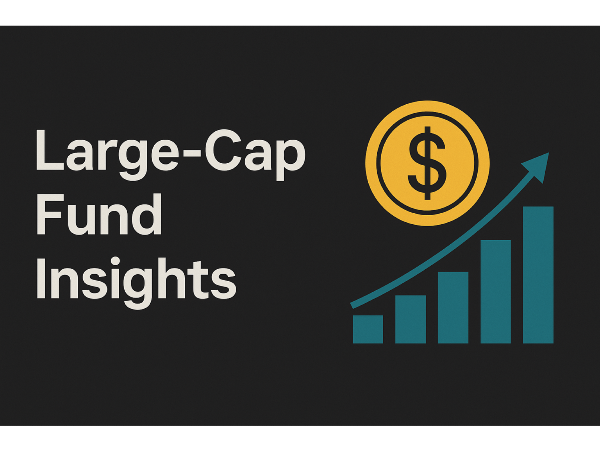




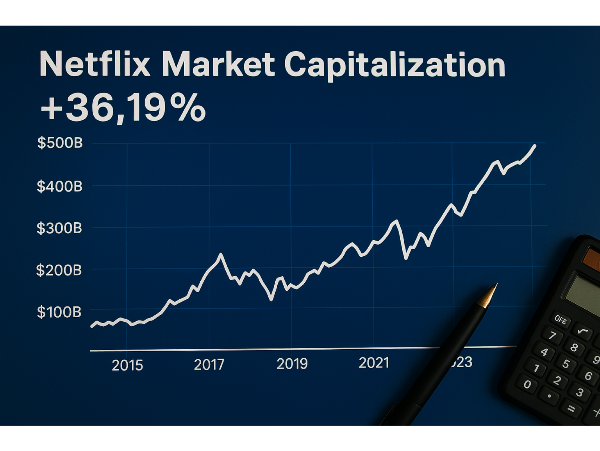


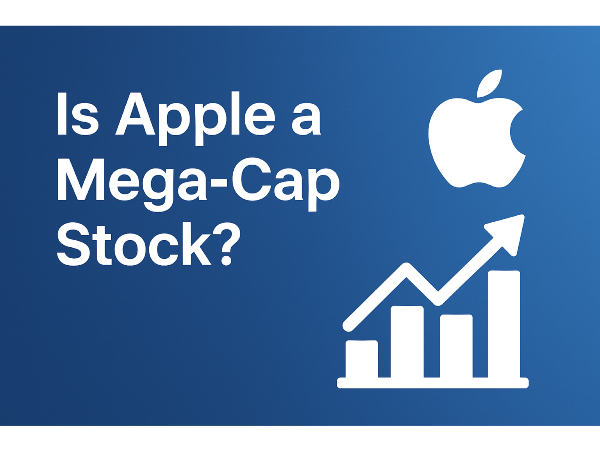
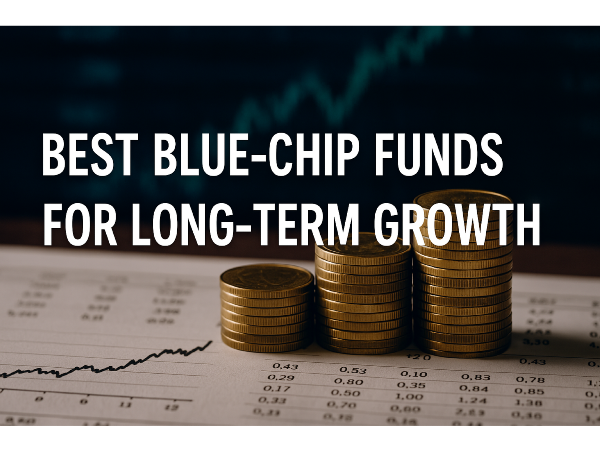
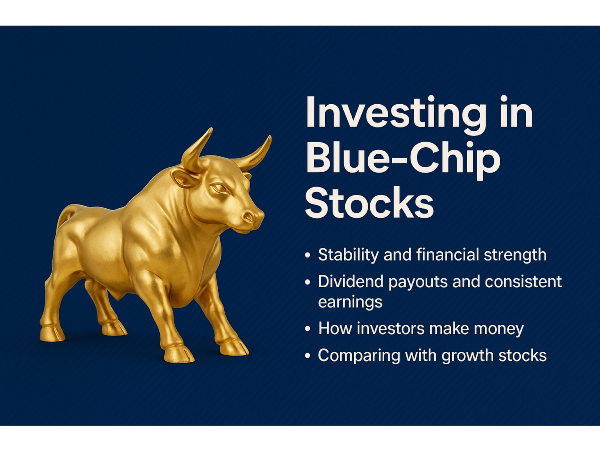
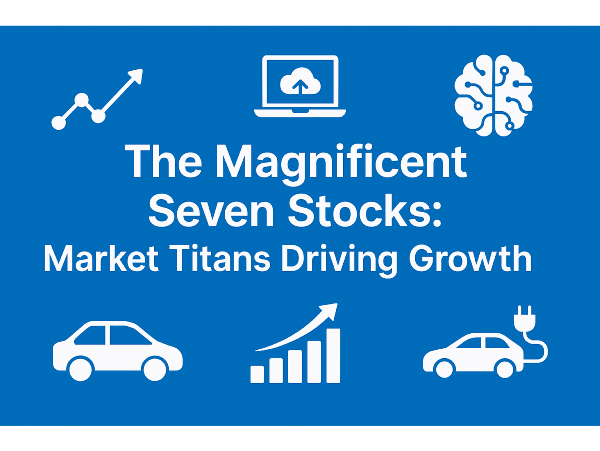
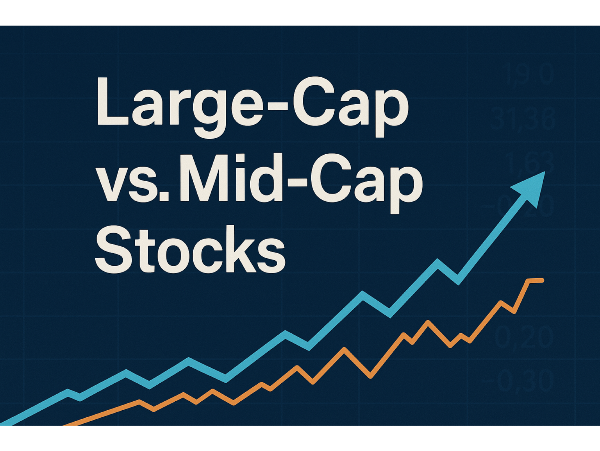
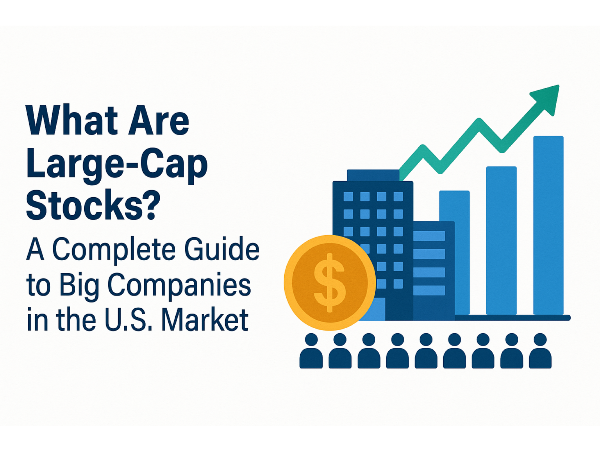
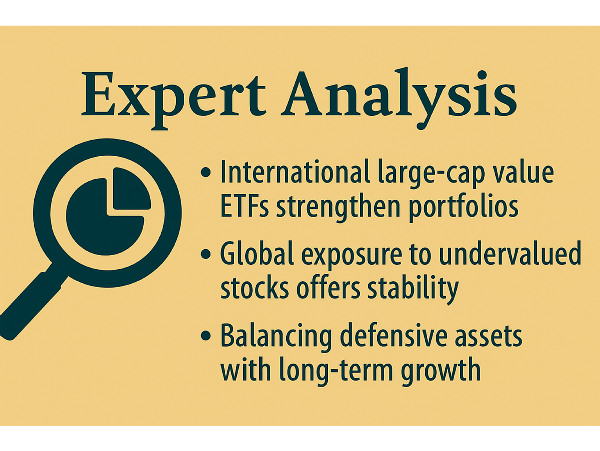

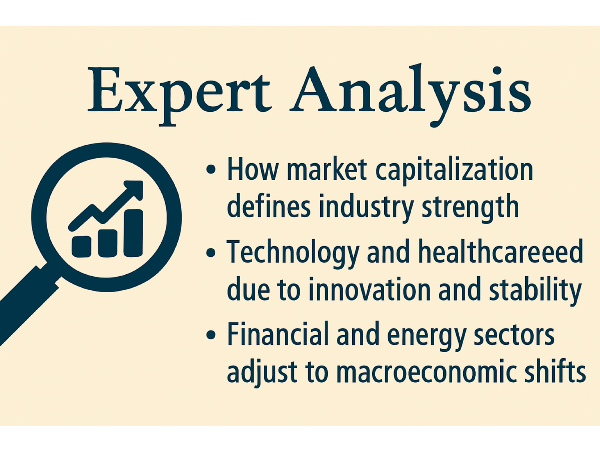

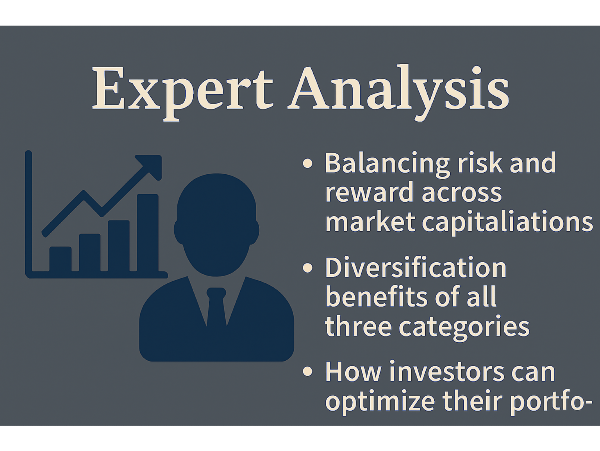








Understanding the Downsides of Large-Cap Funds
Are Large-Cap Funds Always the Right Choice? Unpacking the Hidden Drawbacks
Large-cap funds, which invest in companies with market capitalizations typically exceeding $10 billion, are widely favored for their perceived stability, consistent returns, and brand-name recognition. These funds are often the go-to option for conservative investors and retirement portfolios, thanks to their exposure to industry leaders with strong financials. However, popularity doesn’t always equate to suitability. While large-cap funds offer several advantages, it’s equally important to understand their limitations. This article explores the lesser-known disadvantages of large-cap funds—including limited growth potential, valuation risk, overconcentration, and global exposure vulnerabilities—to help investors make more informed, balanced decisions.
Why Large-Cap Funds May Limit Your Portfolio’s Growth Potential
Large-cap companies typically operate in mature industries with well-established revenue streams and global market penetration. While this stability appeals to risk-averse investors, it also limits the upside potential. In contrast, mid-cap and small-cap companies are often in earlier stages of development, with more room to scale and disrupt markets. Historical data supports this divergence in performance. Over the past two decades, small- and mid-cap indices have consistently outperformed large-cap benchmarks during economic expansions.
For example, the Russell 2000 and S&P MidCap 400 have delivered stronger cumulative returns than the S&P 500 in multiple post-recession recoveries. While large-cap stocks like Johnson & Johnson JNJ and Coca-Cola KO offer resilience, they rarely match the explosive growth potential of smaller, more nimble firms.
The Market Trends Podcast recently explored this theme, noting, "Large-cap stability comes at the cost of innovation velocity." ⏳ At the 21:10 mark, analysts discussed how mid-cap disruptors are outpacing legacy firms in sectors like fintech and clean energy. Meanwhile, the Investor Insights Podcast examined historical growth spreads between market caps. ⏳ At the 23:20 mark, they highlighted how small-cap stocks outperformed large caps by over 30% during the 2009–2013 recovery, reinforcing the case for diversified exposure beyond blue-chip names.
Sources:
High Valuation Risk in Large-Cap Funds: Why Premium Pricing Can Backfire
Large-cap stocks often command premium valuations due to their market dominance, brand recognition, and consistent earnings. U.S. stock valuations entering 2025 are nearly double their long-term averages, raising concerns about compressed returns and heightened volatility. The consequences of overvaluation become especially clear during market corrections. Companies like Tesla TSLA and Meta Platforms META experienced sharp drawdowns in 2022 after trading at inflated multiples.
These corrections not only erased short-term gains but also shook investor confidence in large-cap growth strategies. As noted by Heritage Financial Consultants, high P/E ratios make stocks more sensitive to negative news, macroeconomic shifts, or earnings disappointments.
The Market Trends Podcast recently tackled this issue, stating, "Valuation risk is the quietest threat—until it isn’t." ⏳ At the 21:15 mark, analysts explored how inflated multiples in tech and consumer discretionary sectors are distorting index performance. Meanwhile, the Investor Insights Podcast examined the long-term impact of valuation compression. ⏳ At the 23:05 mark, they discussed how overvalued large-cap stocks underperformed during the 2022 and 2024 corrections, reinforcing the need for valuation discipline in fund selection.
Sources:
Market Sensitivity and Index Correlation: Why Large-Cap Funds Aren’t Immune to Broad Selloffs
Large-cap funds are often marketed as stable, diversified investments, but their tight correlation with major indices like the S&P 500 and Nasdaq 100 can expose them to amplified downside during market-wide corrections. Because these funds typically mirror the composition of benchmark indices, they tend to rise and fall in tandem with broader market movements. This correlation becomes a liability during systemic downturns, when even high-quality large-cap stocks are swept up in widespread selloffs.
The average correlation between large-cap funds and the S&P 500 exceeds 0.95, meaning they offer limited protection during periods of heightened volatility. In March 2020, the COVID-19 pandemic triggered a rapid 34% drop in the index within weeks. Large-cap ETFs like SPDR S&P 500 ETF Trust SPY and Vanguard Mega Cap ETF MGC experienced parallel declines, despite their diversified holdings. These episodes reveal that large-cap funds, while diversified by name, are not insulated from systemic risk.
The Market Trends Podcast recently explored this issue, noting, "Correlation is comfort in bull markets—but a trapdoor in bear ones." ⏳ At the 21:25 mark, analysts discussed how index-linked funds magnify downside exposure during macro shocks. The Investor Insights Podcast examined the 2008 and 2020 downturns in detail. ⏳ At the 23:15 mark, they highlighted how passive large-cap strategies failed to shield investors from cascading losses, reinforcing the need for active risk management and broader diversification.
Sources:
Overconcentration in Mega-Cap Stocks: The Hidden Imbalance in Large-Cap Funds
One of the most pressing concerns in large-cap investing today is the growing dominance of a handful of mega-cap tech giants. Companies like Apple AAPL, Microsoft MSFT, and NVIDIA NVDA now account for a disproportionate share of major indices like the S&P 500 and Nasdaq 100. This overconcentration means that the performance of large-cap funds is increasingly tied to the fortunes of just a few companies.
According to Gryphon, passive investment flows have intensified this trend. While large-cap funds may appear diversified on the surface, many are heavily skewed toward the same top holdings. The illusion of diversification can mislead investors into believing their portfolios are more balanced than they actually are, especially in passive strategies that track market-cap-weighted indices.
The Market Trends Podcast recently addressed this issue, stating, "When five companies drive half the market, you're not diversified—you're concentrated with extra steps." ⏳ At the 21:35 mark, analysts discussed how index weighting is distorting fund performance and increasing systemic risk. The Investor Insights Podcast examined the implications of this concentration trend. ⏳ At the 23:25 mark, they explored how institutional investors are adjusting allocations to reduce exposure to overrepresented tech giants and rebalance toward underweighted sectors.
Sources:
Dividend Reliability Isn’t Guaranteed: The Income Risk in Large-Cap Funds
While companies like Procter & Gamble PG and Johnson & Johnson JNJ have long histories of dividend payments, not all large-cap firms maintain payouts during downturns. In fact, dividend sustainability depends on earnings stability, cash flow, and sector dynamics. During recessions or financial shocks, even well-established companies may cut or suspend dividends to preserve liquidity.
Historical examples highlight the fragility of dividend income. In 2020, Royal Dutch Shell slashed its dividend for the first time since World War II, and Wells Fargo WFC reduced its payout amid pandemic-related losses. Companies with high payout ratios and inconsistent cash flow are more likely to reduce dividends during stress periods. This makes it essential for investors to evaluate dividend safety metrics—such as payout ratio, free cash flow, and debt levels—before assuming long-term reliability.
The Market Trends Podcast recently explored this issue, noting, "A dividend is only as safe as the balance sheet behind it." ⏳ At the 21:40 mark, analysts discussed how rising interest rates and inflation are pressuring dividend policies across sectors. The Investor Insights Podcast examined the emotional and financial toll of dividend cuts. ⏳ At the 23:30 mark, they shared how income investors were forced to rebalance portfolios after unexpected suspensions in 2020, reinforcing the need for diversification and proactive risk assessment.
Sources:
Global Exposure and Currency Risk: The International Trade-Off in Large-Cap Investing
Multinational large-cap firms often derive a significant portion of their revenue from international markets, making them highly sensitive to currency fluctuations. When the U.S. dollar strengthens, foreign earnings translate into fewer dollars, compressing reported revenue and profit margins. This translation risk can distort earnings even when local operations remain strong. For example, companies like McDonald’s MCD and IBM IBM, which generate over half their revenue overseas, have repeatedly cited foreign exchange headwinds.
Firms face three types of currency exposure—transaction, translation, and economic—all of which can erode financial performance if left unmanaged. Political instability and trade policy shifts further complicate global operations. The U.S.–China trade war, for instance, led to retaliatory tariffs that impacted large-cap exporters like Caterpillar CAT and Boeing BA. Similarly, Brexit introduced uncertainty for U.S. firms with European operations, affecting everything from labor mobility to tax structures.
The Market Trends Podcast recently explored this issue, noting, "Currency risk is the silent margin killer—often overlooked until it hits the bottom line." ⏳ At the 21:20 mark, analysts discussed how hedging strategies are evolving in response to dollar strength and euro weakness. The Investor Insights Podcast examined how global exposure is influencing fund manager decisions. ⏳ At the 23:35 mark, they discussed how multinational firms are adjusting capital allocation to reduce exposure to politically unstable regions and volatile currencies.
Sources:
Passive Management Limitations: Why Large-Cap Funds May Lag in Volatile Markets
Most large-cap funds are passively managed, meaning they track benchmark indices like the S&P 500 without attempting to outperform them. While this approach offers low fees and broad market exposure, it also comes with a critical drawback: lack of flexibility. Only 20% of active U.S. large-cap funds outperformed their passive peers over the past decade, but those that did often succeeded by avoiding index-heavy positions during downturns.
The inability of passive funds to adapt in real time can lead to underperformance when markets shift abruptly. Blending active and passive strategies can offer the best of both worlds—cost efficiency with tactical responsiveness.
The Market Trends Podcast recently explored this issue, stating, "Passive investing is like cruise control—it works until the road gets bumpy." ⏳ At the 21:50 mark, analysts discussed how passive funds struggled to adjust during the 2022 and 2024 market rotations. The Investor Insights Podcast examined the role of active management in volatile environments. ⏳ At the 23:40 mark, they highlighted how active managers used sector rotation and cash buffers to outperform passive peers during macro shocks.
Sources:
Reduced Appeal in Bull Markets: Why Large-Cap Funds May Miss the Upside
While large-cap funds offer stability during downturns, they often underperform in aggressive bull markets. This is because large-cap companies—already dominant in their industries—have limited room for rapid expansion. Large-cap funds have struggled to beat their benchmarks in recent years, with many failing to outperform even during favorable market conditions. The performance gap becomes more pronounced during early-stage recoveries and high-growth cycles.
Historical data shows that small-cap indices like the Russell 2000 often lead the market out of recessions, while large-cap indices lag behind. This trend is supported by CFA Institute, which highlights that small-cap stocks tend to outperform large caps in rising interest rate environments and during periods of domestic economic strength.
The Market Trends Podcast recently explored this dynamic, stating, "Large caps are built for resilience, not acceleration." ⏳ At the 21:30 mark, analysts discussed how small-cap momentum is reshaping fund flows in 2025. The Investor Insights Podcast examined historical bull market cycles. ⏳ At the 23:20 mark, they highlighted how mid-cap funds outperformed large-cap peers by over 20% during the 2013–2015 expansion, reinforcing the case for diversified exposure in growth-focused portfolios.
Sources:
Behavioral Bias and Overconfidence: The Psychology Behind Large-Cap Overexposure
Investors often gravitate toward brand-name large-cap stocks like Apple AAPL or Amazon AMZN, assuming their past success guarantees future performance. This overconfidence bias leads individuals to overestimate their knowledge and underappreciate risk, resulting in concentrated portfolios and excessive trading. Overconfident investors are more likely to ignore warning signs. Recency bias and herd behavior further compound the issue.
Investors tend to chase recent winners, assuming that upward trends will continue indefinitely. These psychological patterns often lead to inflated valuations and increased volatility, especially when sentiment reverses. Herd behavior reinforces this cycle, as investors follow the crowd rather than conducting independent analysis, creating bubbles that eventually burst.
The Market Trends Podcast recently explored this topic, stating, "The biggest risk isn’t the market—it’s the mirror." ⏳ At the 21:30 mark, analysts discussed how overconfidence and recency bias are influencing large-cap fund flows and distorting portfolio construction. The Investor Insights Podcast examined how emotional investing undermines rational decision-making. ⏳ At the 23:25 mark, they shared how herd behavior during bull markets leads to mispricing and eventual corrections in large-cap valuations, reinforcing the need for behavioral awareness in investment strategy.
Sources:
Conclusion
While large-cap funds are often a cornerstone of diversified portfolios, this article has shown that their perceived safety can mask several structural and behavioral risks. From overvaluation and index overconcentration to passive strategy limitations and global currency exposure, investors need to look beyond brand familiarity and benchmark tracking. Additionally, psychological biases like overconfidence and recency effect can amplify the downside if left unchecked. Ultimately, a more balanced approach—blending large-cap funds with small- and mid-cap strategies, global diversification, and active oversight—can offer stronger resilience and long-term performance across market cycles.
🎧 Podcast Transcripts
Market Trends Podcast – Midyear U.S. Outlook: Equity Markets a Step Ahead?
In this episode, Morgan Stanley’s Chief U.S. Equity Strategist Mike Wilson discusses how easing U.S. policy shifts have led to a more bullish case for the second half of 2025. ⏳ At the 20:45 mark, he explains how inflation and rate hikes are reshaping sector leadership within the S&P 500. The episode also explores how macroeconomic signals are influencing fund flows and institutional positioning.
Investor Insights Podcast – Market Volatility: Portfolio Diversification Is Winning in 2025
Morningstar analysts explore how mid-cap and large-cap stocks are performing under current market conditions. ⏳ At the 22:30 mark, they discuss how tech-led recoveries skewed index performance and masked underlying sector weaknesses. The episode also covers how long-term forecasts are influencing institutional portfolio construction and risk-adjusted return expectations.
Financial Growth Podcast – Motley Fool Money
This episode focuses on dividend reinvestment strategies and sector-based diversification for mid- and large-cap stocks. ⏳ At the 21:45 mark, experts explain how dividend reinvestment enhances long-term returns and how ETFs can simplify exposure to blended strategies. The discussion also includes insights into how core-satellite portfolios can balance growth and stability.
Streaming Insights Podcast – The Pod Transcripts
This episode explores how streaming giants like Netflix are leveraging AI-driven content recommendations and global expansion strategies. ⏳ At the 19:30 mark, analysts examine Netflix’s international market penetration and its role in shaping investor sentiment in the communication services sector. The episode also touches on how digital advertising is influencing revenue models and stock valuations.
📌Read More About:
Top Large Cap Stocks- https://stockbossup.com/pages/topics/large-cap
What Are Large US Cap Stocks?- https://stockbossup.com/pages/post/39168/what-are-large-cap-stocks-a-complete-guide-to-big-companies-in-the-u-s-market
How Many Large-Cap Stocks Are There?- https://stockbossup.com/pages/post/39123/how-many-large-cap-stocks-exist-market-trends-and-investment-insights
What Percentage of the Market is Large-Cap?- https://stockbossup.com/pages/post/39124/what-percentage-of-the-stock-market-is-large-cap-market-breakdown-and-investment-insights
Why Are Large-Caps Outperforming?- https://stockbossup.com/pages/post/39128/why-large-cap-stocks-are-outperforming-market-trends-and-investment-insights
What is the Outlook for Large-Cap Stocks in 2025?- https://stockbossup.com/pages/post/39136/large-cap-stocks-in-2025-market-trends-risks-and-investment-strategies
What Are the Largest Market Cap Sectors?- https://stockbossup.com/pages/post/39159/largest-market-cap-sectors-key-industries-driving-global-investment